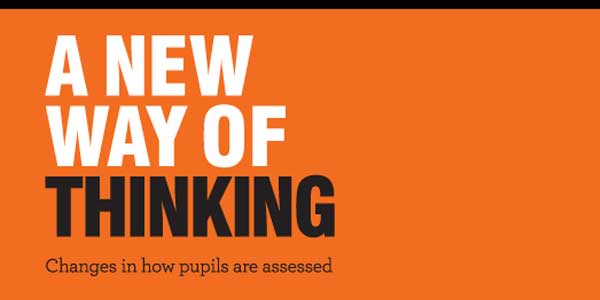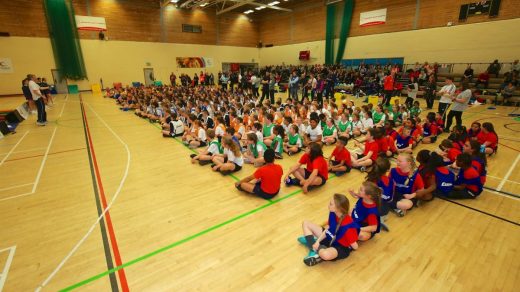A new way of thinking

Changes in how pupils are assessed
The new national curriculum introduced in September 2014 has led to a change in the assessment of pupils in primary and secondary schools. The previous system, when children were assessed using ‘levels’, was considered outdated, difficult for parents to understand, and the Department for Education felt that it failed to ensure that children had enough knowledge at each national curriculum level.
The old system: Levels
Previously, children in primary school would be assessed in levels. For example, the average child was expected to achieve at least ‘Level 2’ in English, maths and science in their KS1 SATs, and ‘Level 4’ in the KS2 SATs.
This system was heavily criticised as being confusing for parents, and that this style of grading didn’t really represent what a child was capable of. The Department of Education went back to the drawing board and introduced a new system in 2014, which all schools will be using from September 2015. The first new KS1 and KS2 tests in English, maths and science will be sat by pupils in the Summer 2016.
The new system: Changes
Now levels are off the table, it’s up to schools what type of assessments they want to use. There will still be the formal assessments at the end of KS1 and KS2 , but the assessing of this and throughout the school year will be different. Freedom
Schools can choose their own informal ways of assessing their pupils, and it can be done in ways that work better for them. Schools will be allowed to have greater control and input into the way assessments will work in their school, allowing the assessment process to be adapted to the best way possible. In general though, pupils will be expected to work at the average, or above, for their year group.
Standards
Whereas before with levels, children were expected to achieve a Level 2 at the end of KS1, and achieve a Level 4 at the end of KS2, a prescribed ‘standards’ system has been suggested to be employed at schools. These standards will be subject to the average of the year group for the whole country, and there are five all together.
From highest to lowest, they will be: mastery; above national standard; national standard; working towards national standard; and below national standard.
Outstanding schools
As teachers will have more freedoms in choosing the way they assess and monitor pupils, schools will look to outstanding schools and see what they’re doing in terms of assessment. Schools will be able to take inspiration in this manner, and base their assessment processes on outstanding schools to encourage their schools to do better.
End of Key Stage assessments
Alongside the changes, there will be new end of Key Stage tests for children.
There will be new end of KS1 tests and at the end of KS2.
At the end of KS2, there will be teacher assessments for reading, maths and science, where teachers will make a judgement against one piece of work. However, in writing, teachers will be asked to choose from one of several pieces of work that will best describe the child’s attainment.
National scoring for schools
The new assessments will translate into new scorings for schools. With the new KS2 tests, children will receive a scaled score between 80 and 120. 100 will be the expected score, so indicating the child will be ‘secondary ready’ and have all the knowledge and skills they need to move up to Year 7.
Parents will see their child’s score, as well as the average scaled score for the school, the region the school is in, and the national average too. This allows an indicator for parents to see how the school itself is doing too, and compare their child’s school to other schools in the region.
Informal assessments
Under the new system, teachers will be encouraged to assess their pupils informally on a regular basis. In this way, children will be informally assessed by their teachers using ‘performance indicators’, whereby it will be monitored what pupils know and are able to do at the time of testing.
This will allow teachers an opportunity to check if the children in their class are working at the expected level for their year group, allowing them to spot where pupils are falling behind and may need extra help, as well as recognising when a pupil is exceeding and doing well.
Corinthian Community Primary School
If you’re unsure about how your child’s primary school is going to be assessing them now, check the school’s website or check with them what the new system is going to be.
Corinthian Community Primary School in West Derby already has its new assessment in place. Instead of using levels, pupils at the school will be assessed using a ‘bands’ system. Each year group is a ‘band’ and there are three terms of learning within that band: B, meaning beginning the band, W, working within the band, or Secure, ready to move on to the next band.
The thinking is that children will start the year group at the beginning of the band, move on to the second band by Easter term, Working, so working at the right expectation for the year group by spring and be working at the final band, Secure by the end of year or the summer. Secure means the child will have all the knowledge and skills ready to move up to the next year.
However, as the emphasis on the new assessment process is that not all children will be working at the same level, because not all children are the same, Corinthian make clear that not every child will start at B for the beginning of the year, and it will depend on the individual children and their needs. It is this need for individuality which has called for the change from the levels of system of merely 2C, 2B, or 2A for example.
Corinthian will work alongside other local schools to agree and moderate attainment levels, as well as the school receiving external moderation from the Local Authority.
More parent-teacher conversation
As a result of the emphasis on more informal assessments, teachers will be encouraged to provide more regular feedback to children and their parents than before. Parents will be more actively aware of how their child is doing in school, so they can be more supportive of their child’s learning.
Many teachers think that the loss of levels may even lead to broader reporting, as teachers won’t be set within a confined way of analysing how a child is doing, which will lead to more relevant and personal reporting of a child’s progress.
GCSE: The changes explained
Changes to GCSE assessments have been in place since last year, when the Government implemented a new system which scrapped modular assessments in favour of a more linear approach and prevented students from resitting exams.
Speaking and listening assessments were also withdrawn putting more focus on written exams, grammar and punctuation.
Grading
From September, new GCSEs in English language, English literature and maths will be taught in schools and the grading system will be completely transformed.
Students will no longer be awarded an A*to G but the grading system will become numerical and GCSEs will instead be ranked 9-1, with 9 being the highest grade.
Students beginning their GCSEs this year will therefore receive 9-1 grades in these subjects when they pick up their exams in 2017. The new system will also be implemented for other subjects from next year.
Grade 5 will be the equivalent of a C grade and will become the new benchmark for what is deemed a good pass at GCSE.
Subjects
From September, it will be compulsory for all students to study English Baccalaureate (EBacc) core subjects of English, maths, science, a language and history or geography.
English Literature will no longer be a compulsory subject and students who opt to take it as a GCSE will study a new syllabus which focuses on more traditional texts such as Shakespeare.
The Government recently announced plans to ensure that all pupils study the Ebacc to GCSE. This measure will be implemented for all pupils starting Year 7 this September who will take their GCSE examinations in 2020. In maths, one of the main changes to the syllabus involves a greater focus on finance and learning that can be translated into the ‘real world’. Students will also be required to learn formulae by heart and the percentage of calculator based assessment will be decreased.




